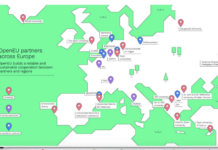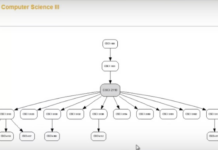Butcher, N. and Wilson-Strydom, M. (2013) A Guide to Quality in Online Learning Dallas TX: Academic Partnerships
Butcher, N. and Hoosen, S. (2014) A Guide to Quality in Post-traditional Online Higher Education Dallas TX: Academic Partnerships
With Stamenka Uvalić-Trumbić and Sir John Daniel editors of both publications, Academic Partnerships has sponsored and published these two guides to quality in online learning, the 2013 publication focusing on formal higher education and the 2014 publication focusing on ‘post-traditional’ higher education.
Quality in Online Learning: Formal Higher Education
The 2013 publication states:
individuals, institutions and professional bodies in many countries are addressing the challenge of how to make online learning a quality experience for students. This Guide distils this widespread experience and extensive research into a compact and readable account….It is structured in the form of 16 ‘Frequently Asked Questions’, followed by an additional reading list focused on quality benchmarks and international best practices. The main focus [of the 2013 guide] is on fully structured online courses that include assessments and the awarding of a qualification.
The 16 questions addressed in this publication are as follows:
- What is online learning?
- How is online learning offered?
- What constitutes quality in online learning?
- How can institutions assure quality?
- What institutional structures and staffing resources do you need for ensuring quality in online learning?
- What resources should you allocate to developing quality online learning?
- How can students judge the quality of online learning?
- How can instructional design, learning materials, and course presentation contribute to quality online learning?
- How can the structure of the virtual environment facilitate quality online learning?
- What do web design and web usability factors contribute to quality?
- How can you use media (video, graphics, audio, animation and simulation) to enhance quality in online learning?
- What online assessment and assignment methodologies promote quality learning?
- How do you ensure examination security?
- What strategies can you deploy for interaction and student community building?
- How can teaching and facilitation contribute to ensuring quality?
- What support should students receive?
There is also a comprehensive annotated reading list on benchmarks for quality online learning.
Quality in ‘Post-traditional Online Higher Education’
The 2014 publication states:
alternative or ‘post-traditional’ approaches to higher education… include new types of informal short courses and approaches to certification, growing openness in access to intellectual capital, and a lively diversification of teaching and learning methods, not least in MOOCs. This new Guide seeks to help individuals and institutions that are venturing into this post-traditional world…A move to greater openness on several dimensions is the common thread in what we are calling ‘post-traditional’ higher education….
The authors stress that it is too early to be prescriptive about good practice in the quality assurance of these new manifestations of higher education because the field is in a state of rapid evolution. Instead, the 2014 publication attempts to answer 13 questions:
- What is post-traditional higher education?
- Does post-traditional higher education always involve online learning and the Internet?
- What does ‘open’ mean in education?
- What are the main expressions of ‘openness?’
- What are some key terms related to openness?
- What is driving post-traditional higher education?
- What will be the impact of post-traditional higher education on institutions?
- How can we assure the quality of post-traditional higher education?
- Can post-traditional higher education lead to awards?
- Open badges: what is their relevance to quality?
- How can accreditation adapt to post-traditional higher education?
- What key policy issues does openness pose for institutions?
- Do institutional quality practices need to change?
- Will openness change the spending priorities of institutions?
Comment
I have deliberately grouped these two publications together for review, because looking at either in isolation would not be sufficient for a comprehensive overview of issues on assuring and assessing the quality of online learning. Taken together though they are essential reading for anyone who wants to understand the issues around this topic.
It would be a good idea to give both papers to any new Provost or Vice-Rector of Teaching and Learning. These papers will bring them up to speed very quickly on the topic of quality in online learning. Both papers are thoroughly researched, clearly written, comprehensive, and up to date, with excellent bibliographies for further reading. What I liked particularly was their international perspective, looking at efforts from across the world.
The first paper is much more ‘bread and butter’, the plain facts about how quality can be assured and assessed with regard to formal post-secondary online education leading to recognized institutional qualifications. To be honest it doesn’t add a great deal to what has been written by many other authors on this topic, except it is in a particularly accessible format. It is worth reading if only for the following:
you should not assume that creating quality assurance structures… automatically improves quality….Institutional quality assurance structures and processes are important, but beware of making them an exercise in compliance for accountability, rather than a process of learning and self-improvement that really improves quality.
The second paper, dealing with ‘post-traditional’ online higher education, is much more interesting, because it is one of the first attempts to look systematically at the issues around quality in open educational resources, MOOCs, and badges. As the authors note:
The quality assurance of post-traditional higher education is not straightforward, because openness and flexibility are primary characteristics of these new approaches, whereas traditional approaches to quality assurance were designed for teaching and learning within more tightly structured frameworks.
Nevertheless, in answering question 8, the authors have a pretty good go at it. They come to what I think many will find a controversial conclusion:
fundamental judgements about quality should not depend on whether education is provided in a traditional or post-traditional manner …the growth of openness is unlikely to demand major changes to quality assurance practices in institutions. The principles of good quality higher education have not changed
The problem is that quality is such a subjective concept. Advocates of open educational resources often want to claim exemption for quality in OERs – being open is more important than being of high quality. No, it isn’t. Open educational resources need to be both open and of high quality. One of the problems with MOOCs is that those of us who have long experience in online learning are appalled at the instructional quality of most MOOCs, yet this is more a problem of the quality of campus teaching and poor lecturing techniques being transferred without modification to online learning than the issue of MOOCs being open access or online, so I think Butcher and Hoosen are absolutely right in their conclusion, so long as it is recognized that each form of teaching – campus-based or online learning – needs to be designed so that it is fit for purpose, and this will mean different design criteria but not necessarily different criteria for assessing quality.
The authors also argue that most institutions do not need new policies to recognize credit from non-traditional approaches to learning, but should adapt or modify existing policies. I’m not so sure about this. The issue is not so much about changing policies or procedures, but changing mind-sets. Once the mind-set is changed, new policies will then become more feasible.
These though are minor quibbles. If you want to get a handle on assessing quality in online learning, read both papers. Even if you are well on top of the literature of quality in online learning, I strongly recommend the second paper, because it draws some clear distinctions between formal and ‘non-traditional’ online learning and the implications for the assessment of quality.
See also: E-learning quality assurance standards, organizations, and research










 Dr. Tony Bates is the author of eleven books in the field of online learning and distance education. He has provided consulting services specializing in training in the planning and management of online learning and distance education, working with over 40 organizations in 25 countries. Tony is a Research Associate with Contact North | Contact Nord, Ontario’s Distance Education & Training Network.
Dr. Tony Bates is the author of eleven books in the field of online learning and distance education. He has provided consulting services specializing in training in the planning and management of online learning and distance education, working with over 40 organizations in 25 countries. Tony is a Research Associate with Contact North | Contact Nord, Ontario’s Distance Education & Training Network.


Very interesting article (2013) – I especially like the QM Rubric Standards 2011-13. By the way the second article links to a jpg image rather than the article itself.
Thanks, Uwe. I’ve now fixed the link (which is temporary, until it’s up on the Academic Partnerships’ site).
[…] Continuar leyendo: Guides to quality in formal and ‘post-traditional’ online learning: two publications […]